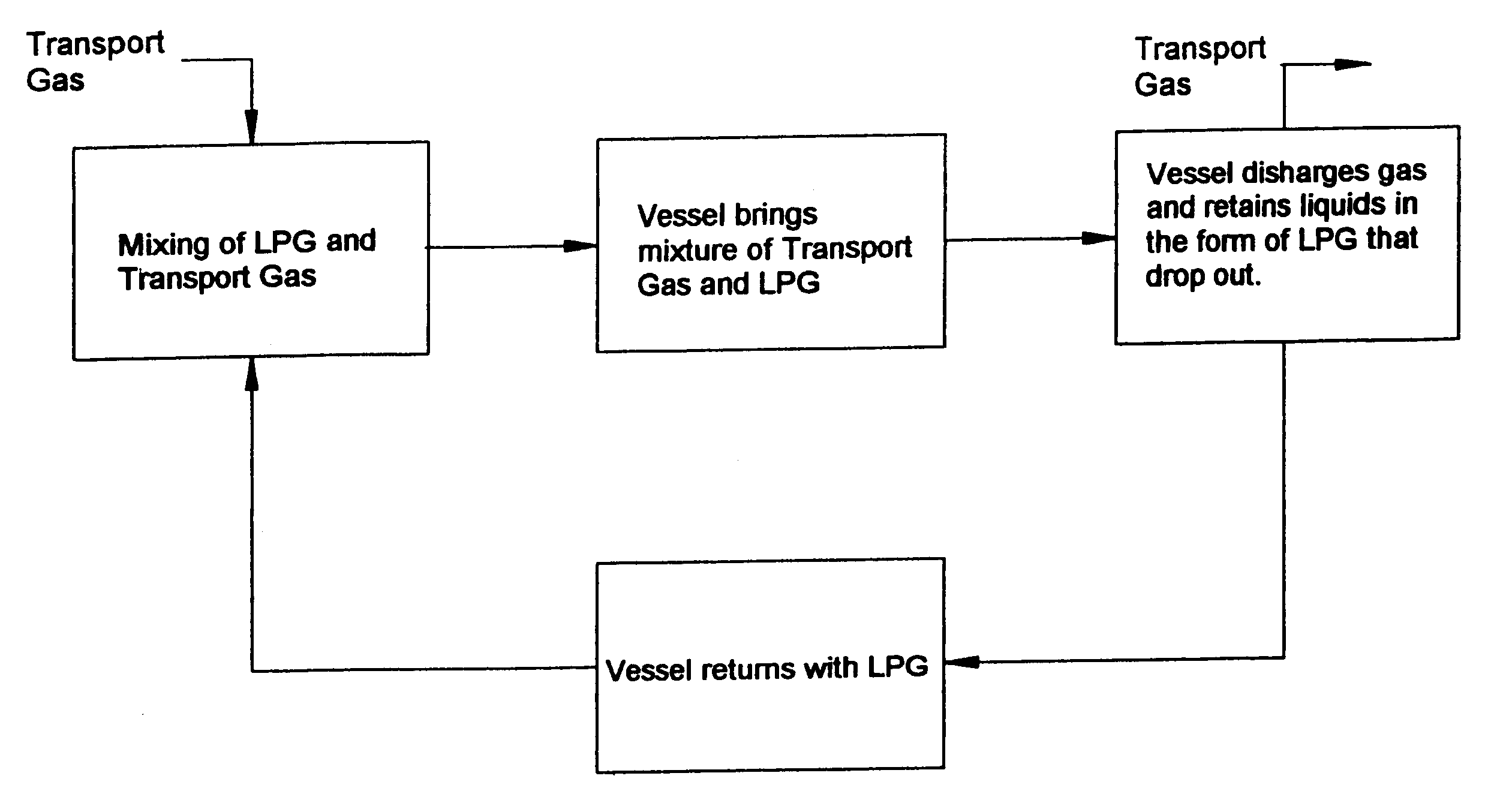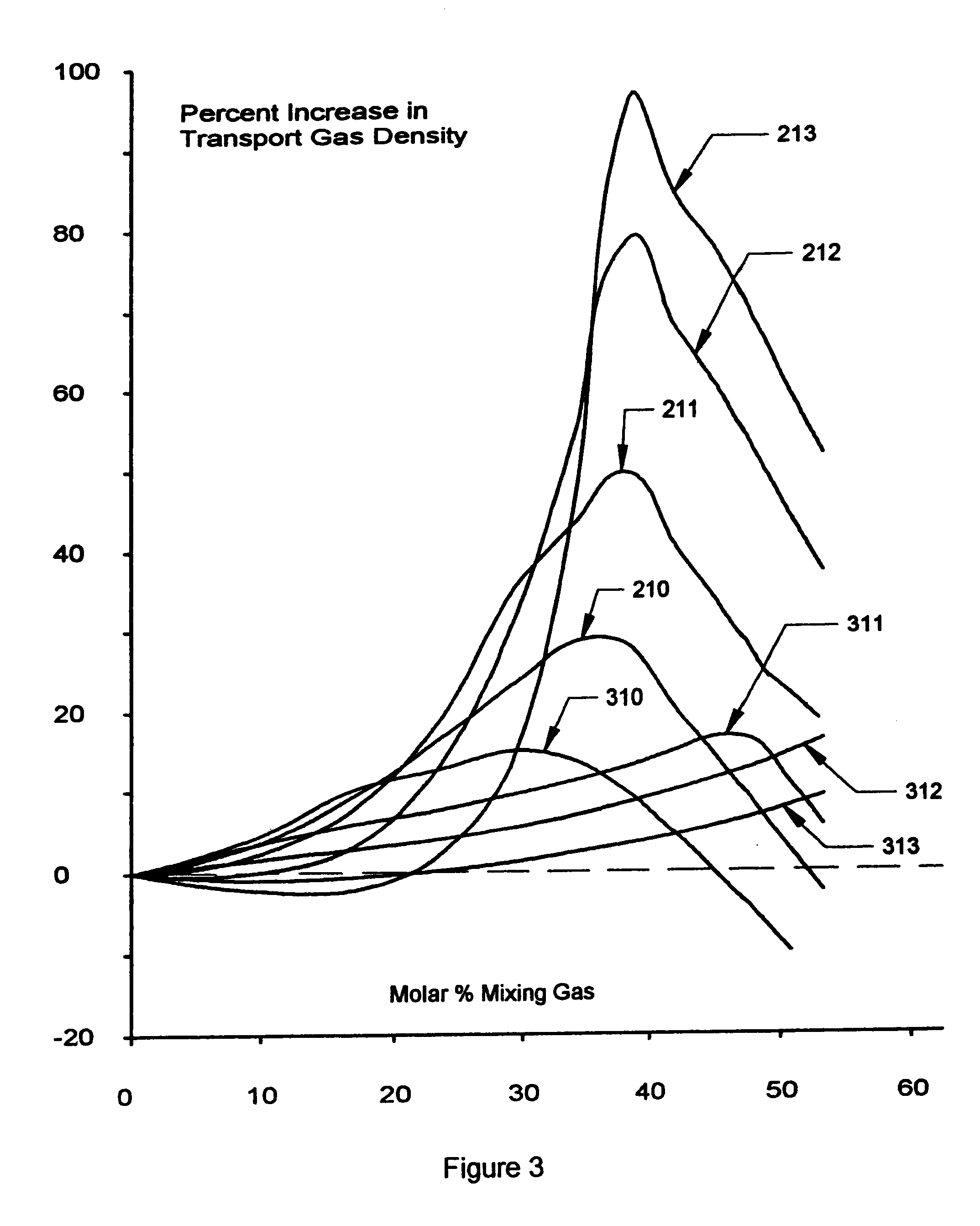Method for transportation of low molecular weight hydrocarbons
a technology of hydrocarbons and transportation methods, applied in the directions of transportation and packaging, load accommodation, borehole/well accessories, etc., can solve the problems of significant increase in gas temperature and unsatisfactory hydrocarbon gas mixtures
- Summary
- Abstract
- Description
- Claims
- Application Information
AI Technical Summary
Problems solved by technology
Method used
Image
Examples
first embodiment
This first embodiment is illustrated in FIGS. 4 and 5.
FIG. 4 shows the transport ship 30 floating in the sea with surface 26 and seabed 25 at the receiving point for the gas cargo. The ship 30 may be moored by a number of known technologies, not shown. The vessel is connected to a source of compressed gas, not shown, through a submarine pipeline 27 that in turn connects to a riser 28 that is disconnectably connected to the piping 31 on vessel 30 at the connector 32. Piping 31 is connected to inlet 33 in the pressure storage tank 34 through valve 35. The pressure storage tank 34 is for clarity shown located on the deck of vessel 30, however, it would ordinarily be located within the hull of vessel 30. Pressure storage tank 34 would ordinarily be comprised of a large number of individual storage tanks 34, however, for clarity only one is shown.
The tank is shown receiving gas at an intermediate pressure below the design pressure such that the gas within the storage tank is in two phase...
PUM
 Login to View More
Login to View More Abstract
Description
Claims
Application Information
 Login to View More
Login to View More - R&D
- Intellectual Property
- Life Sciences
- Materials
- Tech Scout
- Unparalleled Data Quality
- Higher Quality Content
- 60% Fewer Hallucinations
Browse by: Latest US Patents, China's latest patents, Technical Efficacy Thesaurus, Application Domain, Technology Topic, Popular Technical Reports.
© 2025 PatSnap. All rights reserved.Legal|Privacy policy|Modern Slavery Act Transparency Statement|Sitemap|About US| Contact US: help@patsnap.com



